The nineteenth century having exhausted its need of having a model, because the truth that the things seen with the eyes are the only real things, had lost its significance.
People really do not change from one generation to another, as far back as we know history people are about the same as they were, they have had the same needs, the same desires, the same virtues and the same qualities, the same defects, indeed nothing changes from one generation to another except the things seen and the things seen make that generation, that is to say nothing changes in people from one generation to another except the way of seeing and being seen, the streets change, the way of being driven in the streets change, the buildings change, the comforts in the houses change, but the people from one generation to another do not change. The creator in the arts is like all the rest of the people living, he is sensitive to the changes in the way of living and his art is inevitably influenced by the way each generation is living, the way each generation is being educated and the way they move about, all this creates the composition of that generation.
This summer I was reading a book written by one of the monks of the Abbey of Hautecombe about one of the abbots of Hautecombe and in it he writes of the founding of the abbey and he tells that the first site was on a height near a very frequented road. Then I asked all my French friends what was in the fifteenth century a very frequented road, did it mean that people passed once a day or once a week. More than that, they answered me. So then the composition of that epoch depended upon the way the roads were frequented, the composition of each epoch depends upon the way the frequented roads are frequented, people remain the same, the way their roads are frequented is what changes from one century to another and it is that that makes the composition that is before the eyes of every one of that generation and it is that that makes the composition that a creator creates.
I very well remember at the beginning of the war being with Picasso on the boulevard Raspail when the first camouflaged truck passed. It was at night, we had heard of camouflage but we had not yet seen it and Picasso amazed looked at it and then cried out, yes it is we who made it, that is cubism.
Really the composition of this war, 1914–1918, was not the composition of all previous wars, the composition was not a composition in which there was one man in the centre surrounded by a lot of other men but a composition that had neither a beginning nor an end, a composition of which one corner was as important as another corner, in fact the composition of cubism.
At present another composition is commencing, each generation has its composition, people do not change from one generation to another generation but the composition that surrounds them changes.
Now we have Picasso returning to Paris after the blue period of Spain, 1904, was past, after the rose period of France, 1905, was past, after the negro period, 1907, was past, with the beginning of his cubism, 1908, in his hand. The time had come.
I have said that there were three reasons for the making of this cubism.
First. The composition, because the way of living had changed the composition of living had extended and each thing was as important as any other thing. Secondly, the faith in what the eyes were seeing, that is to say the belief in the reality of science, commenced to diminish. To be sure science had discovered many things, she would continue to discover things, but the principle which was the basis of all this was completely understood, the joy of discovery was almost over.
Thirdly, the framing of life, the need that a picture exist in its frame, remain in its frame was over. A picture remaining in its frame was a thing that always had existed and now pictures commenced to want to leave their frames and this also created the necessity for cubism.
The time had come and the man. Quite naturally it was a Spaniard who had felt it and done it. The Spaniards are perhaps the only Europeans who really never have the feeling that things seen are real, that the truths of science make for progress. Spaniards did not mistrust science they only never have recognised the existence of progress. While other Europeans were still in the nineteenth century, Spain because of its lack of organisation and America by its excess of organisation were the natural founders of the twentieth century.
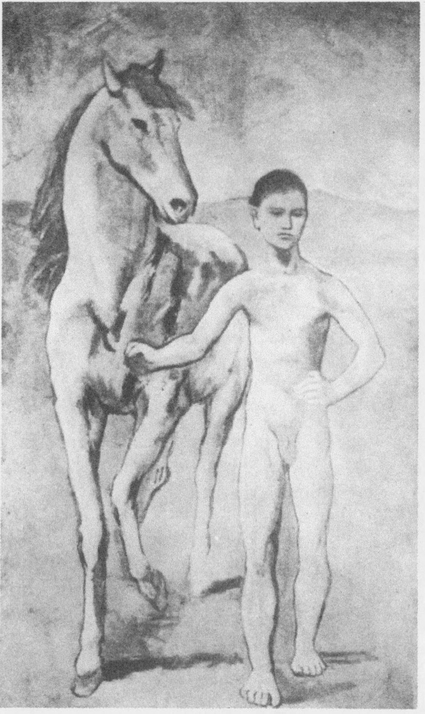
12 JEUNE GARÇON AU CHEVAL
(Winter, 1905)
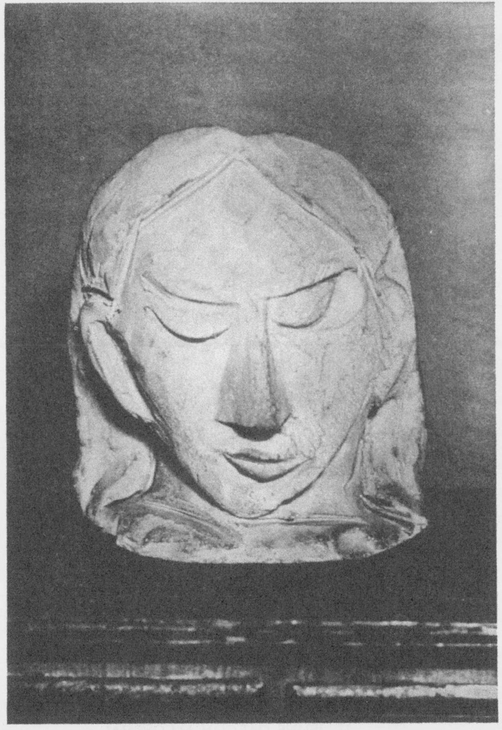
13 HEAD OF A WOMAN : Modelled Plaster (1906)
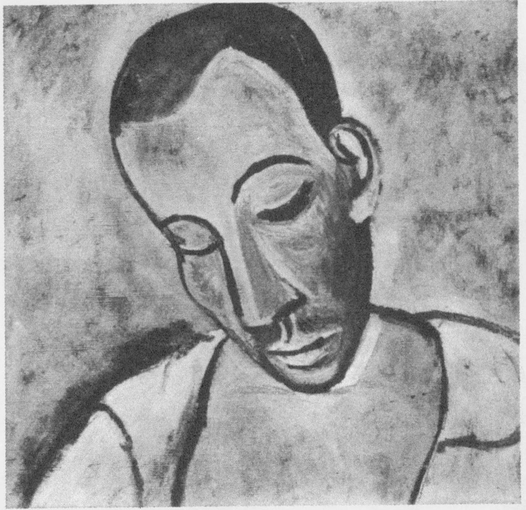
14 HEAD OF A MAN (Spring, 1907)
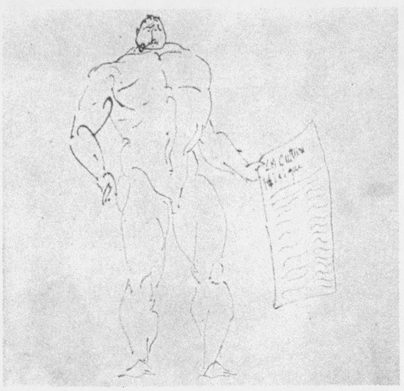
15 PORTRAIT OF GUILLAUME APOLLINAIRE
(“Culture Physique”): Ink Drawing (1906)
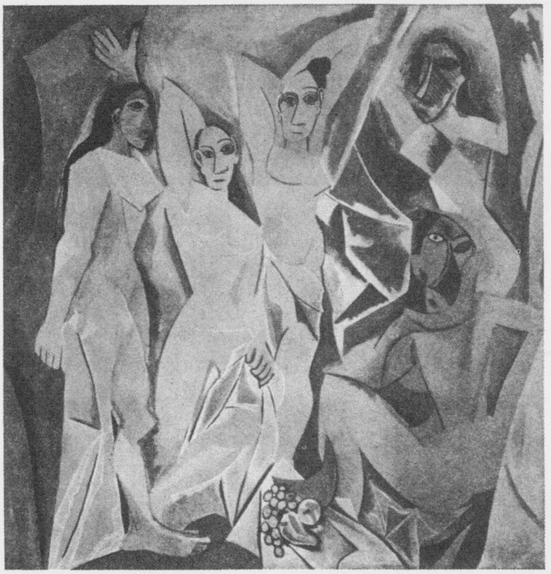
16 LES DEMOISELLES D’AVIGNON (1906)
Cubism was commencing. Returning from Spain Picasso went back to the rue Ravignan but it was almost the end of the rue Ravignan, he commenced to move from one studio to another in the same building and when cubism was really well established, that is the moment of the pictures called Ma Jolie, 1910, he had left the rue Ravignan and a short time after he left Montmartre, 1912, and he never after returned to it.
After his return from Spain with his first cubist landscapes in his hand, 1909, a long struggle commenced.
Cubism began with landscapes but inevitably he then at once tried to use the idea he had in expressing people. Picasso’s first cubist pictures were landscapes, he then did still lifes but Spaniard that he is, he always knew that people were the only interesting thing to him. Landscapes and still lifes, the seduction of flowers and of landscapes, of still lifes were inevitably more seductive to Frenchmen than to Spaniards, Juan Gris always made still lifes but to him a still life was not a seduction it was a religion, but the ecstasy of things seen, only seen; never touches the Spanish soul.
The head the face the human body these are all that exist for Picasso. I remember once we were walking and we saw a learned man sitting on a bench, before the war a learned man could be sitting on a bench, and Picasso said, look at that face, it is as old as the world, all faces are as old as the world.
And so Picasso commenced his long struggle to express heads faces and bodies of men and of women in the composition which is his composition. The beginning of this struggle was hard and his struggle is still a hard struggle, the souls of people do not interest him, that is to say for him the reality of life is in the head, the face and the body and this is for him so important, so persistent, so complete that it is not at all necessary to think of any other thing and the soul is another thing.
The struggle then had commenced.
Most people are more predetermined as to what is the human form and the human face than they are as to what are flowers, landscapes, still lifes. Not everybody. I remember one of the first exhibitions of Van Gogh, there was an American there and she said to her friend, I find these portraits of people quite interesting for I don’t know what people are like but I don’t at all like these flower pictures because I know very well what flowers are like.
Most people are not like that. I do not mean to say that they know people better than they know other things but they have stronger convictions about what people are than what other things are.
Picasso at this period often used to say that Spaniards cannot recognise people from their photographs. So the photographers made two photographs, a man with a beard and a man smooth shaven and when the men left home to do their military service they sent one of these two types of photographs to their family and the family always found it very resembling.
It is strange about everything, it is strange about pictures, a picture may seem extraordinarily strange to you and after some time not only it does not seem strange but it is impossible to find what there was in it that was strange.
A child sees the face of its mother, it sees it in a completely different way than other people see it, I am not speaking of the spirit of the mother but of the features and the whole face, the child sees it from very near, it is a large face for the eyes of a small one, it is certain the child for a little while only sees a part of the face of its mother, it knows one feature and not another, one side and not the other, and in his way Picasso knows faces as a child knows them and the head and the body. He was then commencing to try to express this consciousness and the struggle was appalling because, with the exception of some African sculpture, no one had ever tried to express things seen not as one knows them but as they are when one sees them without remembering having looked at them.
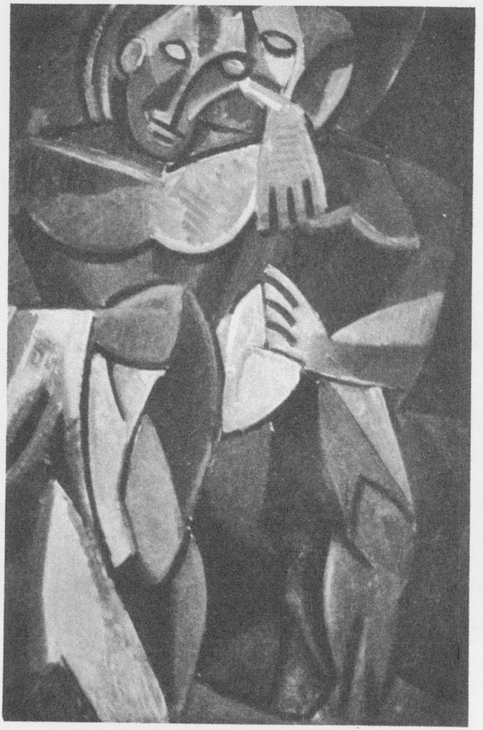
17 TWO NUDE WOMEN (Spring, 1908)
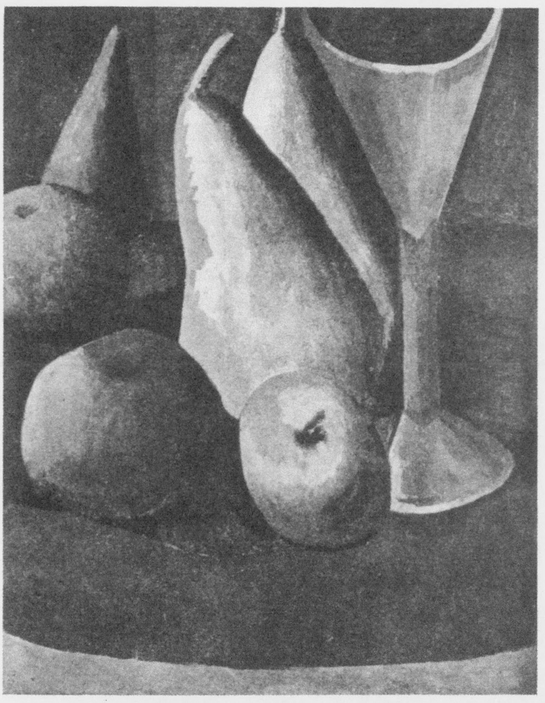
18 FRUIT AND GLASS : Gouache (1908)
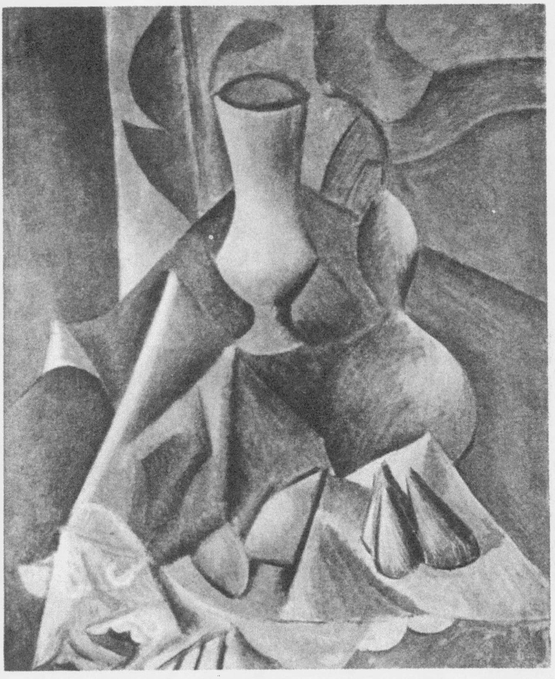
19 STILL-LIFE WITH FIGS : Green Period (1909)
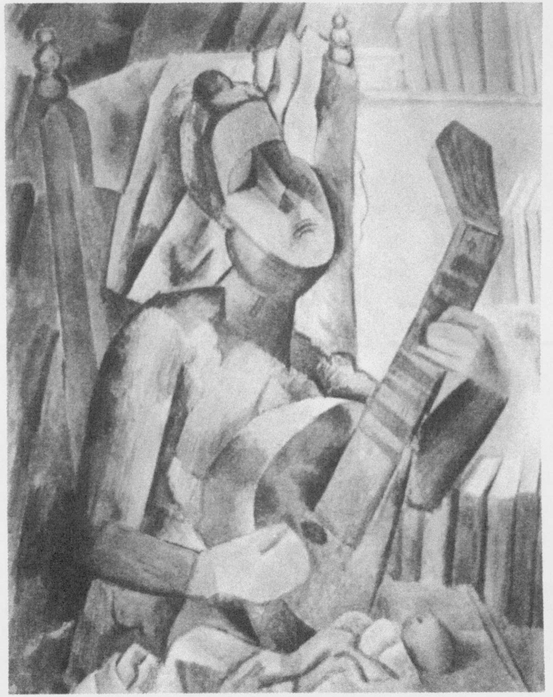
20 WOMAN WITH GUITAR (1909)
Really most of the time one sees only a feature of a person with whom one is, the other features are covered by a hat, by the light, by clothes for sport and everybody is accustomed to complete the whole entirely from their knowledge, but Picasso when he saw an eye, the other one did not exist for him and only the one he saw did exist for him and as a painter, and particularly as a Spanish painter, he was right, one sees what one sees, the rest is a reconstruction from memory and painters have nothing to do with reconstructions, nothing to do with memory, they concern themselves only with visible things and so the cubism of Picasso was an effort to make a picture of these visible things and the result was disconcerting for him and for the others, but what else could he do, a creator can only do one thing, he can only continue, that is all he can do.
The beginning of this struggle to express the things, only the really visible things, was discouraging, even for his most intimate friends, even for Guillaume Apollinaire.
At this time people had commenced to be quite interested in the painting of Picasso, not an enormous number of people but even so quite a few, and then Roger Fry, an Englishman, was very impressed by my portrait and he had it reproduced in The Burlington Magazine, the portrait by Picasso next to a portrait by Raphael, and he too was very disconcerted. Picasso said to me once with a good deal of bitterness, they say I can draw better than Raphael and probably they are right, perhaps I do draw better but if I can draw as well as Raphael I have at least the right to choose my way and they should recognise it, that right, but no, they say no.
I was alone at this time in understanding him, perhaps because I was expressing the same thing in literature, perhaps because I was an American and, as I say, Spaniards and Americans have a kind of understanding of things which is the same.
Later Derain and Braque followed him and helped him but at this time the struggle remained a struggle for Picasso and not for them.
We are now still in the history of the beginning of that struggle.
Picasso commenced as I have said, at the end of the harlequin or rose period to harden his lines his construction and his painting and then he once more went to Spain, he stayed there all summer and when he came back he commenced some things which were more absolute and this led him to do the picture Les Desmoiselles d’Avignon. He left again for Spain and when he returned he brought back with him those three landscapes which were the real beginning of cubism.
It is true certainly in the water colors of Cezanne that there was a tendency to cut the sky not into cubes but into arbitrary divisions, there too had been the pointilism of Seurat and his followers, but that had nothing to do with cubism, because all these other painters were preoccupied with their technique which was to express more and more what they were seeing, the seduction of things seen. Well then, from Courbet to Seurat they saw the things themselves, one may say from Courbet to Van Gogh and to Matisse they saw nature as it is, if you like, that is to say as everybody sees it.
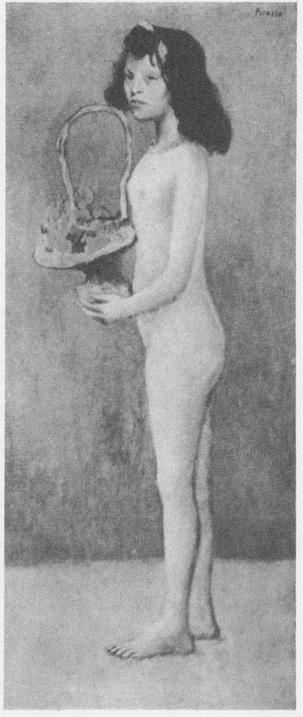
21 A LITTLE GIRL WITH A BASKET OF FLOWERS:
Rose Period (1905)
One day they asked Matisse if, when he ate a tomato, he saw it as he painted it. No, said Matisse, when I eat it I see it as everybody sees it and it is true from Courbet to Matisse, the painters saw nature as every one sees it and their preoccupation was to express that vision, to do it with more or less tenderness, sentiment, serenity, penetration but to express it as all the world saw it.
I am always struck with the landscapes of Courbet, because he did not have to change the color to give the vision of nature as every one sees it. But Picasso was not like that, when he ate a tomato the tomato was not everybody’s tomato, not at all and his effort was not to express in his way the things seen as every one sees them, but to express the thing as he was seeing it.
1 comment